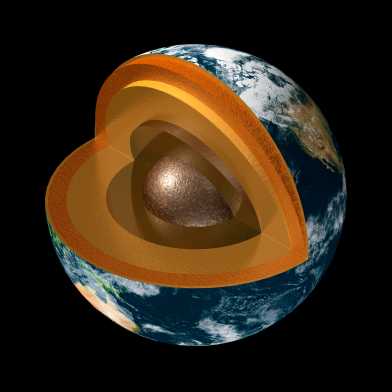News
Why seismic waves spontaneously race inside the earth

A spectacular breakthrough in geoscience shows that our planet is in motion even at a depth of 3000 kilometres.
Updated: What ETH glacier researchers know about the collapse of the Birch Glacier

On Wednesday, May 28th, the Birch Glacier collapsed under the weight of rock and debris from rockfalls on the Kleine Nesthorn. Following an on-site inspection, ETH Zurich researchers explain the background to the collapse that buried the village Blatten in an updated fact sheet.
Robots assemble reinforcing steel

The technology of ETH Zurich spin-off MESH allows for new shapes and was used for the Tor Alva in Mulegns, among others. And it makes construction more efficient, for example in prefabrication for the second Gotthard road tunnel.
Ultra-thin lenses that make infrared light visible

Physicists at ETH Zurich have developed a lens with magic properties. Ultra-thin, it can transform infrared light into visible light by halving the wavelength of incident light.
Save twice the ice by limiting global warming

A new study with ETH Zurich, finds that if global warming exceeds the Paris Climate Agreement targets, the non-polar glacier mass will diminish significantly. However, if warming is limited to 1.5°C, at least 54 per cent could be preserved—more than twice as much ice as in a 2.7°C scenario.
Study demonstrates benefits of molecular tumour analysis

Every tumour is unique. This makes it difficult to find the most effective therapy for treatment. Researchers in Zurich and Basel are now showing how state-of-the-art molecular biological technologies can be used to create a detailed tumour profile within four weeks, enabling tailored treatment. The study is the first of its kind in the world.
Happy Birthday, ESA!

The European Space Agency (ESA) is celebrating its 50th anniversary. ESA has helped make Europe more technologically independent and has played a key role in space exploration in recent decades. And ETH Zurich has always been one of its partners on its journey.
Is AI the future of weather and climate modelling?

Machine learning has emerged as a powerful tool for weather forecasting and offers considerable potential for climate projections. Nicolas Gruber and Andreas Prein explain why traditional simulations using numerical models remain indispensable.
Sanitary towels morph into test strips

Researchers at ETH Zurich have developed the first technology that is able to recognise biomarkers in menstrual blood – directly in sanitary towels. MenstruAI promises a simple, non-invasive method for recording health data in everyday life.
Old water, new insights

Five years ago, an experiment began at ETH Hönggerberg: researchers set up an outdoor laboratory in the forest near the campus. They used sensors positioned in trees, the soil and in a stream to study water dynamics and the “old water paradox”. ETH News accompanied the head of the experiment, Marius Floriancic.
Six professors appointed

At the meeting on 21st and 22nd May 2025, the ETH Board appointed two female and four male professors at the request of ETH President Joël Mesot. The Board also awarded the title of "Professor" three times and the title of "Professor of Practice" twice.
Where power will come from in 2050

By 2050, the aim is for Switzerland’s energy system to be decarbonised and no longer reliant on nuclear power. How this can be achieved and the costs of doing so are set out in a new report by a Swiss research consortium involving researchers from ETH Zurich, the universities of Geneva and Bern, EPFL, WSL, and ZHAW.